Essential Arts: ‘Sweet Land’ picks apart the myth of America in opera
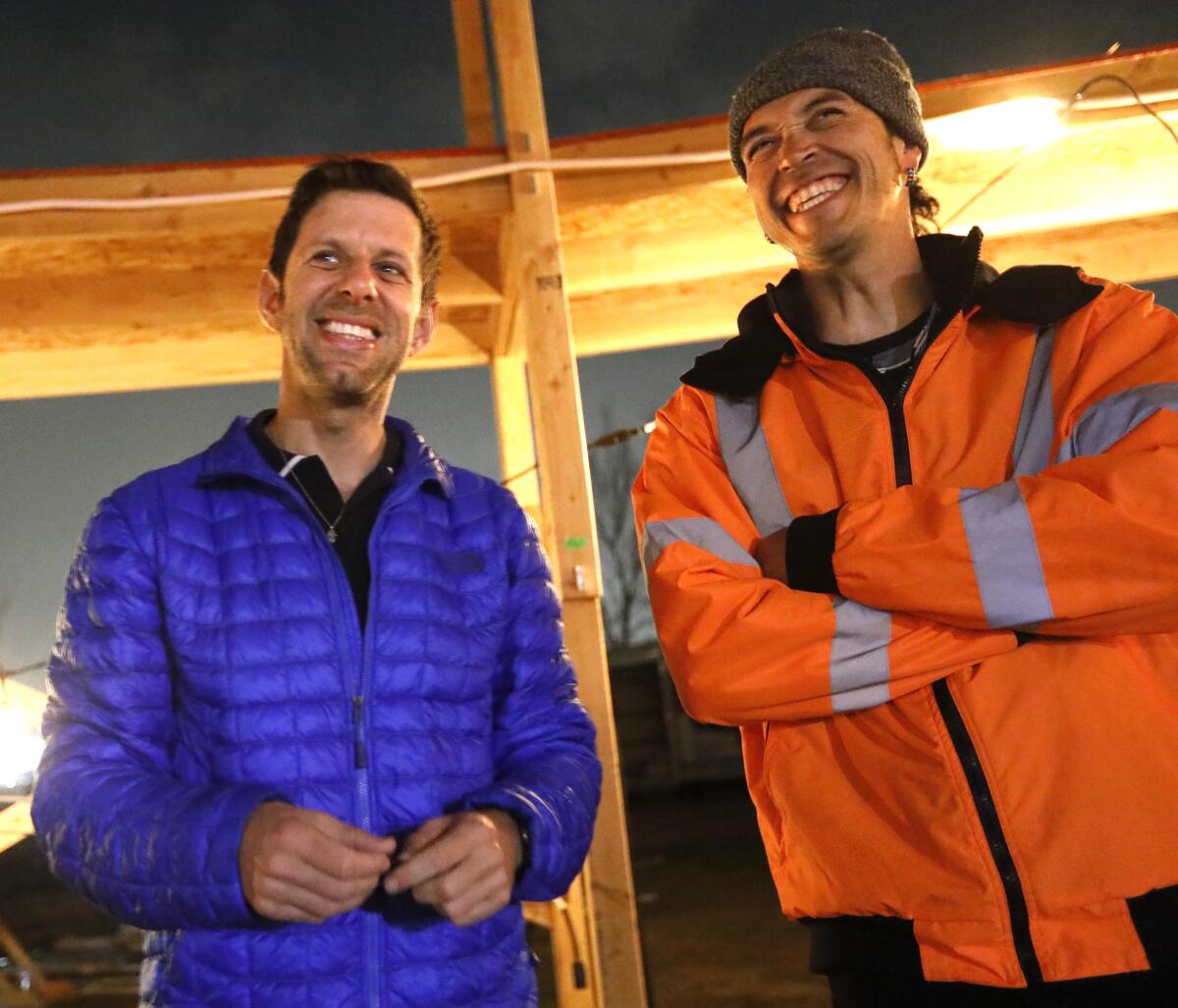
Greetings, humans. It’s Carolina A. Miranda, staff writer at the Los Angeles Times, back from gallivanting around bad shopping malls on the East Coast. Herewith, your weekly dose of culture news:
Split narratives
An audience arrives to see an opera and is divided, led to one of two spaces where they see different versions of a similar story. At the end, they come back together, grounded in realities that intersect but remain far apart. That is “Sweet Land,” the new opera from the Industry, the company founded by Yuval Sharon. For this unusual opera, which opens this weekend, Sharon teamed up with a co-director, multidisciplinary artist Cannupa Hanska Luger, along with composers Raven Chacon and Du Yun and librettists Aja Couchois Duncan and Douglas Kearney, to collaboratively imagine a story of “Hosts” and “Arrivals” that echoes U.S. colonial history.
The Times’ Jessica Gelt had the good fortune to hang out with this crew at a recent rehearsal. She writes: “Toss out everything you thought you knew about the land you are currently occupying.”
Classical notes
When the L.A. Phil announced that it would mix works by American composer Charles Ives and the Czech Antonín Dvorák for its annual symphony cycle, the whole thing “sounded like a bad idea” to Times classical music critic Mark Swed. But Swed says that the first two programs, which paired Ives’ First and Dvorák’s Seventh, as well as Ives’ Second and Dvorák’s Eight, “proved a revelation.”
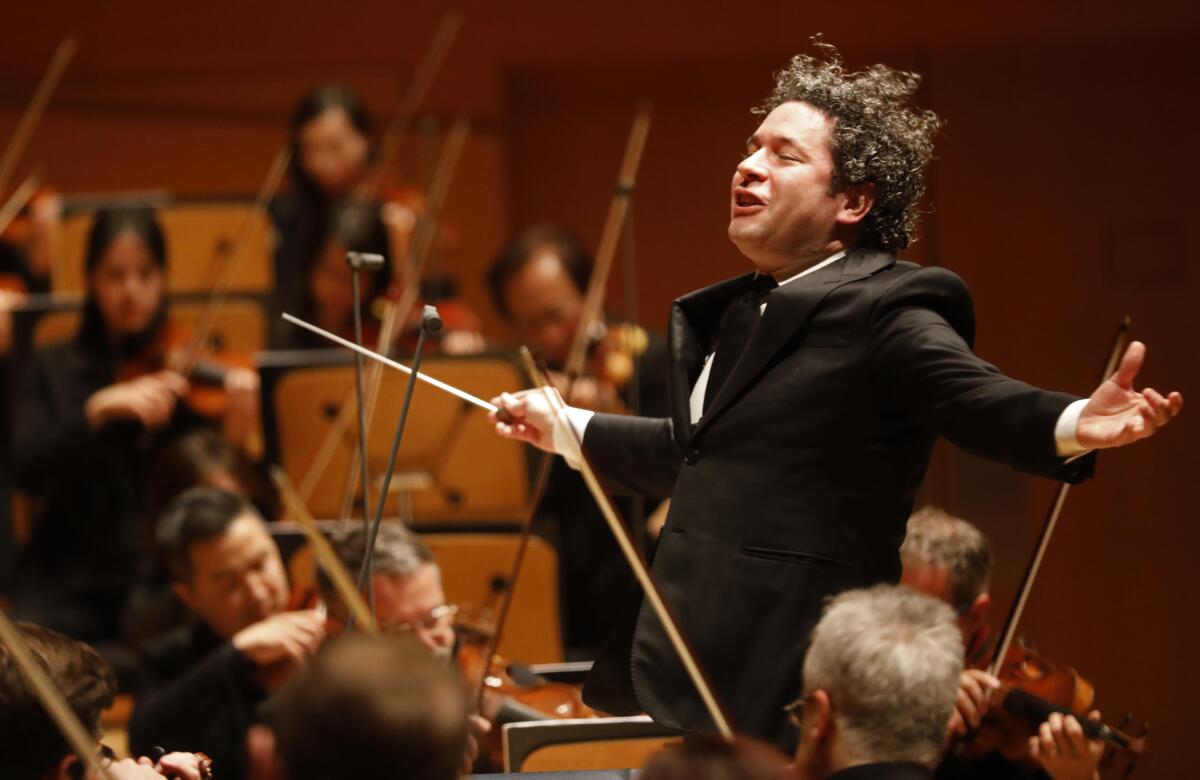
Swed reviews separate concerts by pianists Yuja Wang and Hélène Grimaud. Their personal styles could not be more different. “Wang attacks the piano,” he writes. “Grimaud plays as if at one with her instrument. Wang braves her audience. Grimaud communes.” But “each pianist was self-possessed in the extreme.”
Make the most of L.A.
Get our guide to events and happenings in the SoCal arts scene. In your inbox once a week.
You may occasionally receive promotional content from the Los Angeles Times.
L.A. Opera’s production of Donizetti’s “Roberto Devereux” just opened at the Dorothy Chandler Pavilion, and it’s been a bit jinxed. There was the resignation last year of Plácido Domingo, which meant replacing the title player. This was followed by the sudden withdrawal of Davinia Rodríguez, who plays Queen Elizabeth, due to illness. But Angela Meade jumped in with little preparation and delivered “some exceptionally fine singing,” reports Swed, and Eun Sun Kim “made the orchestra stand out as though there was a resonator of some sort in the pit.”
Siempre en Domingo
Speaking of Plácido Domingo: A day before the American Guild of Musical Artists, which represents opera performers, was due to release the results of its investigation into allegations of sexual harassment against the tenor, Domingo released a statement apologizing for his behavior: “I respect that these women finally felt comfortable enough to speak out, and I want them to know that I am truly sorry for the hurt that I caused them.” Jessica Gelt has the full story.
A day later, the New York Times reported that the AGMA had been on the verge of striking a deal that would have required Domingo to pay $500,000 and would have limited the union’s public statements on the matter. The union, however, released a statement describing the fee as a “fine”— “to our knowledge the largest to be imposed on a union member” — and not as an “exchange.”

Times columnist Mary McNamara is not impressed with Domingo’s apology — which he seemed to contradict two days later. (In that statement, he claimed he had “never behaved aggressively toward anybody.”) Writes McNamara: “Any reflection he has done in the last few months appears to be about how to minimize any damage the accusations will have on his career and legacy.”
Meanwhile at LACMA
Last week, I dug through LACMA’s finances to see how the museum is doing on the money front as it prepares to build a new structure by Peter Zumthor. This week, art critic Christopher Knight reported that the Ahmanson Foundation, which has made gifts of art to the museum worth more than $130 million over the decades, would no longer be doing so. “We’ve been unable to get a commitment from [museum director] Michael Govan about presenting the collection as it has been throughout the life of the museum,” says foundation president William Ahmanson.
Govan tells the Art Newspaper that “the museum is immensely grateful” for the donations and he hopes they resume “when the misunderstandings subside.”
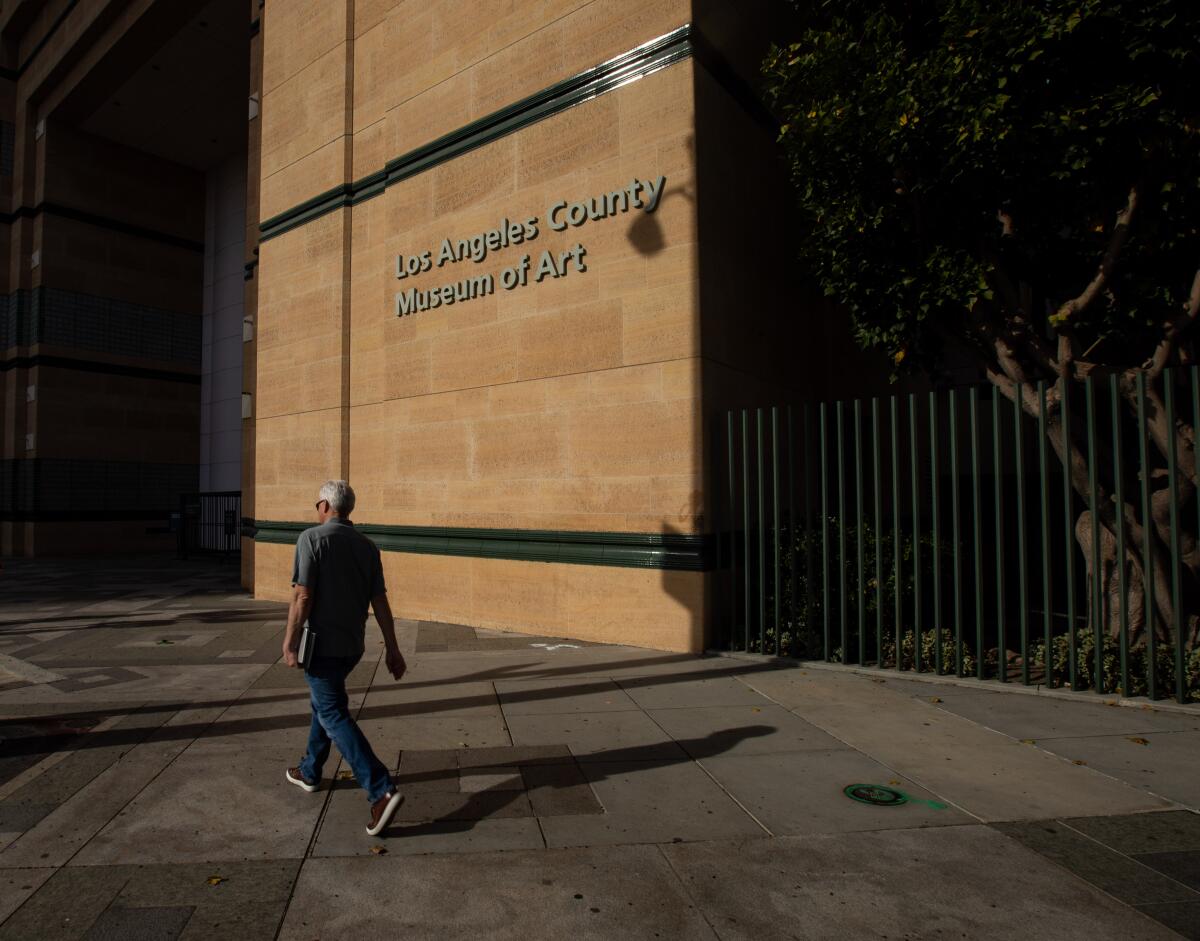
The Times’ recent reporting on LACMA, which also included an architectural analysis by Sam Lubell, has been generating plenty of reader mail.
In the galleries
Leah Ollman reviews a pair of shows this week, including Marley Freeman’s exhibition of paintings at Parker Gallery — small works that hinge “on intimacy not just of scale but also of sensory experience” — and Tanja Rector’s fabric paintings at Craig Krull. These “handsome and heartening works” are crafted from scraps that she stitches into geometric patters that “align in jaunty rhythms.”
David Pagel heads to the Landing to check out a solo show by Brenda Goodman, who makes “rough around the edges” paintings that are “also sophisticated, just like the best cave paintings, which still make magic with no-frills bluntness.”
And I profile L.A. painter Shizu Saldamando, who has a series of portraits on view at Oxy Arts in Highland Park. Her work, which focuses on L.A.’s Latinx art and punk scenes, updates the narratives about immigrant communities. “I gravitate to people who construct themselves as high art,” she tells me.
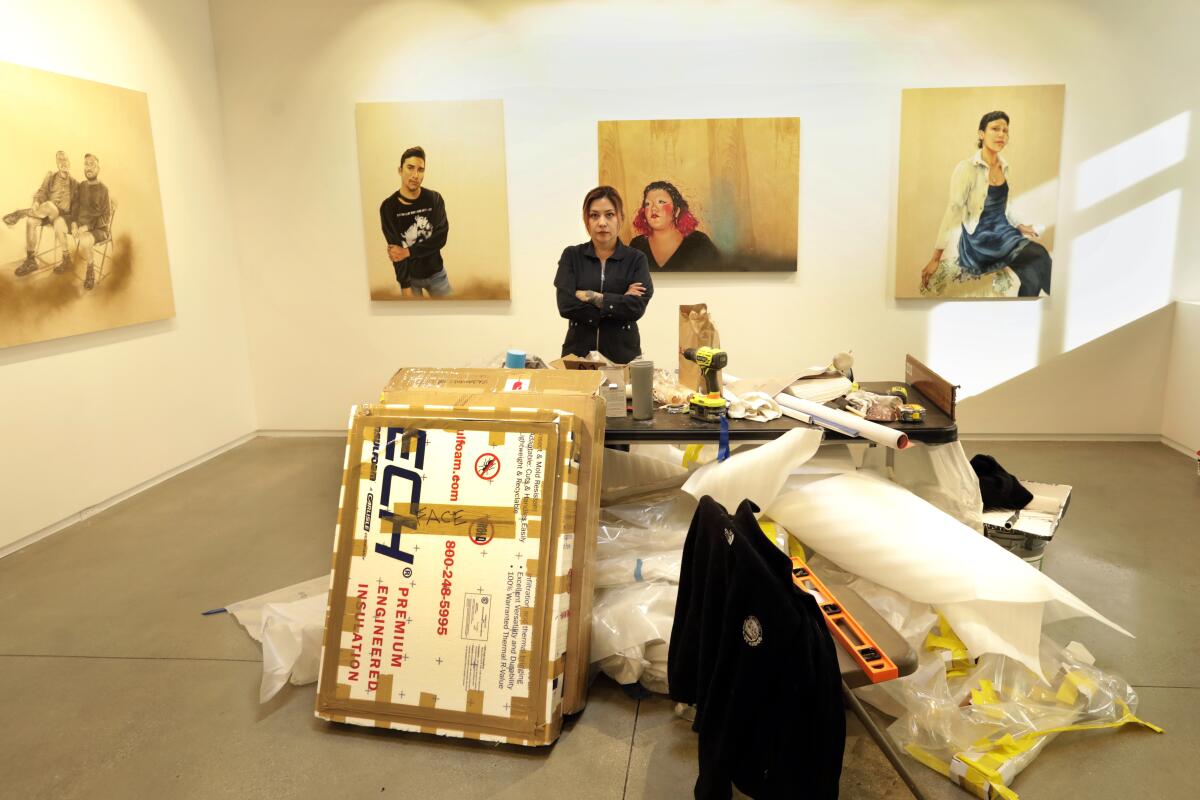
On the stage
Playwright David Mamet recently tested a new play at L.A.’s Odyssey Theatre but the details were kept hush hush. Times theater critic Charles McNulty nonetheless managed to score a ticket to the show, titled “The Christopher Boy’s Communion.” “The experience reminded me of what I admire about Mamet’s talent,” he writes, “and what I have found so off-putting since ‘Oleanna’ — the stacking of the deck in ideological blood battles.”
Enjoying this newsletter? Consider subscribing to the Los Angeles Times
Your support helps us deliver the news that matters most. Become a subscriber.
“It’s a musical for people who might not like musicals,” says Benjamin Romans, who co-wrote the lyrics and music for “Cages,” an unusual production currently being staged inside an industrial building in the Arts District. The Times’ Ashley Lee reports on this work of “future theater,” which fuses performance, dance and digital projections.
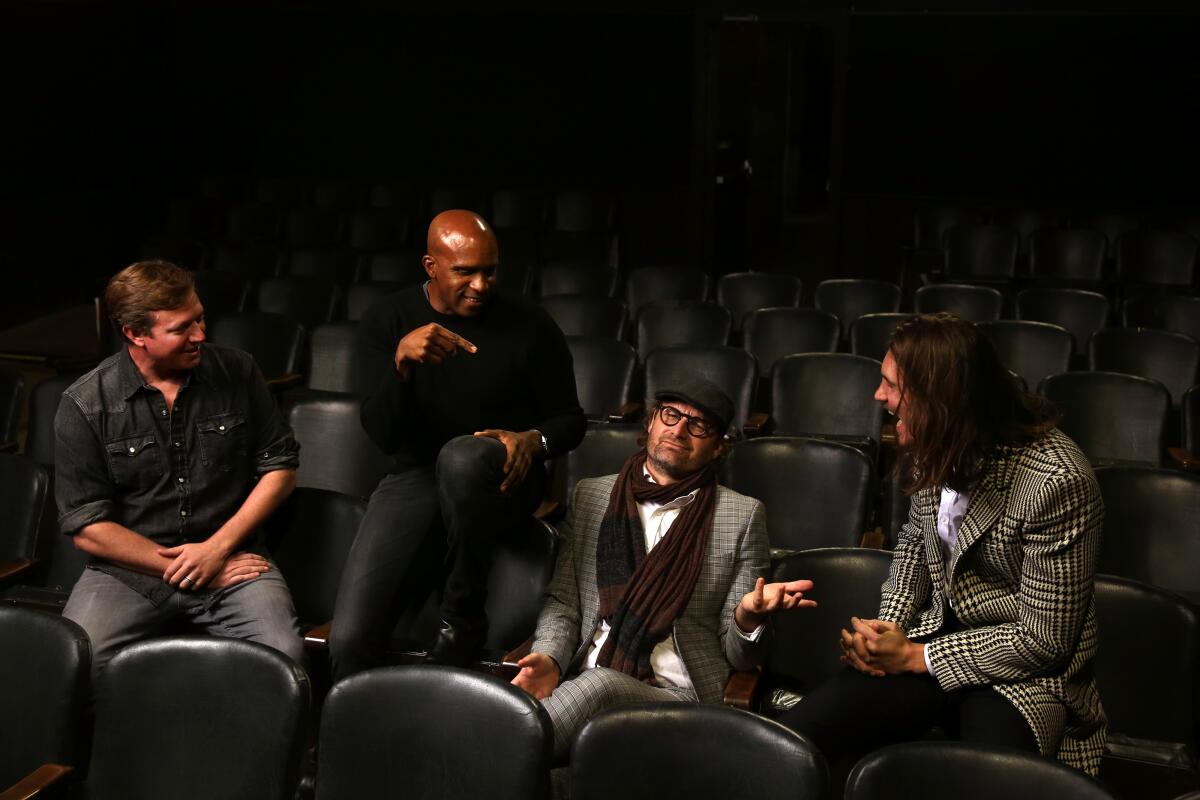
Lee also reports that Broadway shows are making a comeback at the Dolby Theatre (where the Oscars are held). This will include productions of “Oklahoma” and “Pretty Woman: The Musical.”
Ready for the weekend
I round up the latest artsies in my weekly Datebook, which includes a series of new art installations inspired by the people and landscapes of Borrego Springs.
And Matt Cooper has the definitive list on the eight best things to do on Leap Day weekend, including a performance of “Romeo + Juliet” by Ballet BC in the San Fernando Valley. Find his week-ahead planner at “Things To Do: Arts & Culture.”
In other news
— “Being a woman in the art world inherently is to be not thought of as mattering.” L.A. painter Alexandra Grant talked art and feminism at a dinner hosted by Gwyneth Paltrow and Goop.
— Dancer and artist Simone Forti’s archives are headed to the Getty Research Institute.
— It’s based in New York, but the Chinese dance troupe Shen Yun has nonetheless been fighting rumors that its members are linked to the coronavirus.
— A prominent law professor has alleged that British Parliament altered a key document in the 19th century to justify removing the Elgin Marbles from Greece. The British Museum, which holds the works, disputes the claim.
— Otis College of Art and Design has named Charles Hirschhorn its new president.
— And curator João Ribas is taking over as the new executive director of REDCAT.
— Eyal Weizman, a British architect who has worked as a war crimes investigator and is a member of the collective Forensic Architecture, was denied entry to the U.S., reportedly because an algorithm deemed him a threat.
— “We are enduring crimes against humanity.” Simon Romero has a wrenching story about how the federal government is blasting sacred indigenous sites to build the border wall.
— The Iowa architect documenting every slave house that is still standing.
— That Rem Koolhaas-curated show at the Guggenheim? Critic Justin Davidson searches (in vain) for its point.
And last but not least ...
“Ugh, men. They’re such dopes.” This is the kind of obituary I aspire to.
The biggest entertainment stories
Get our big stories about Hollywood, film, television, music, arts, culture and more right in your inbox as soon as they publish.
You may occasionally receive promotional content from the Los Angeles Times.




